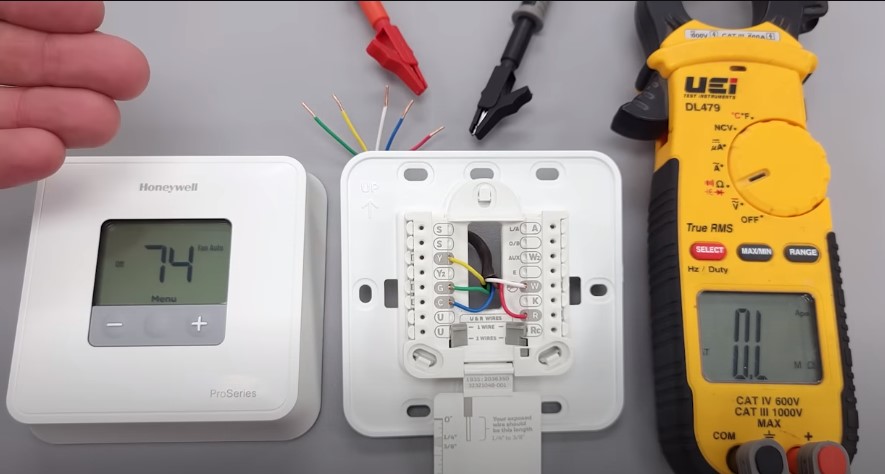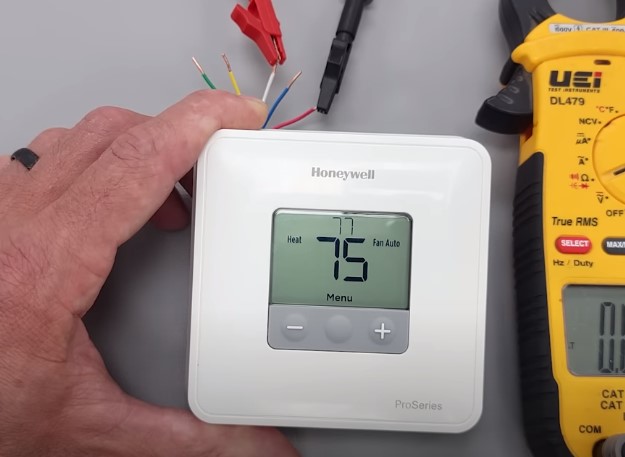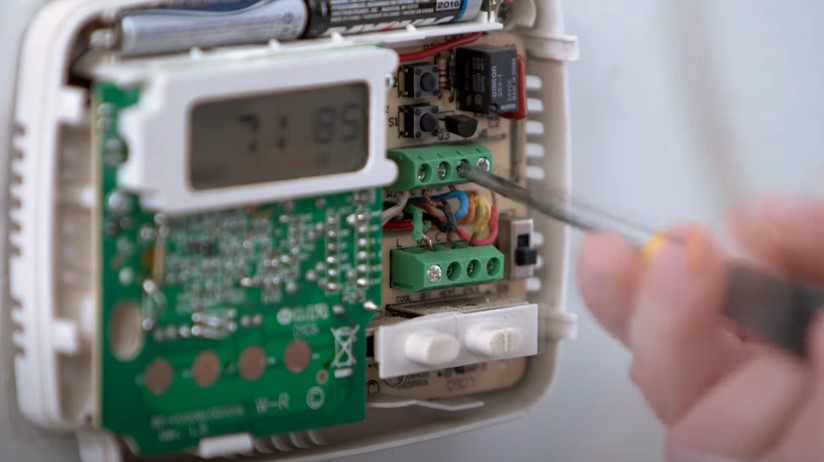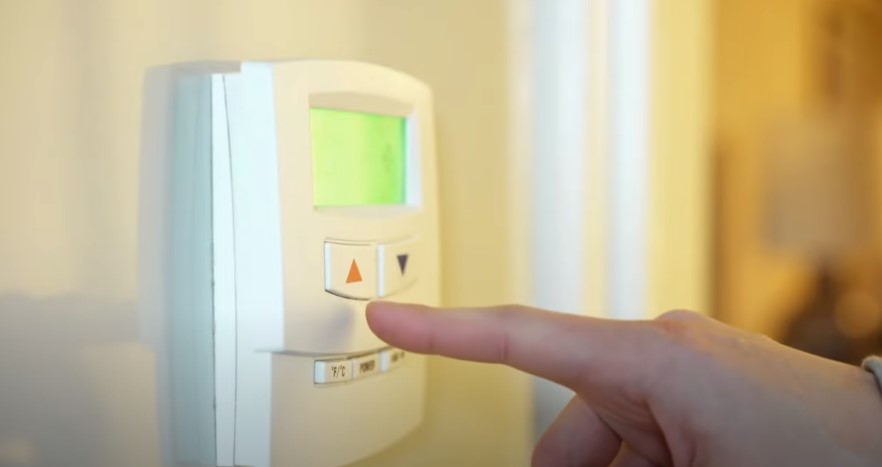Moving a thermostat may become necessary when renovating a home, improving the HVAC system’s efficiency, or adjusting the temperature control in a different area. Understanding the costs involved in relocating a thermostat is essential for homeowners who wish to ensure proper budgeting.
So in this article, we will explore the expenses associated with moving a thermostat.
How Much Does It Cost to Move a Thermostat?
The relocation of a thermostat entails varying costs, averaging between $100 and $500, sometimes exceeding this range. The final price is subject to several key factors, including the desired placement of the new thermostat, the type of system being used, and the current position of the existing thermostat.
It’s worth noting that older thermostat models often incur higher expenses compared to their smart counterparts due to their reliance on intricate wiring arrangements for proper functionality.

What is a Thermostat?
A thermostat is a device used to control and regulate the temperature of a space, such as a room or a building, by monitoring and adjusting the heating, ventilation, and air conditioning (HVAC) system.
It serves as a temperature sensor and a control unit, allowing users to set their desired temperature and providing feedback to the HVAC system to maintain the desired climate.
Thermostats can be manual or programmable, and more advanced models even offer smart features, allowing remote control and automation through smartphone apps or voice commands.
Different Factors Affecting the Cost of Moving a Thermostat
Intended Location of the New Thermostat
The placement of the new thermostat plays a crucial role in determining the cost of relocation. If the new location requires extensive electrical or wiring work, such as drilling through walls or routing cables, the labor and material costs will increase.
Additionally, if the desired location is far from the HVAC system, additional wiring may be necessary, further impacting the overall cost.

Type of System
The type of HVAC system in place also affects the cost of moving a thermostat. Systems that rely on traditional wiring connections tend to be more complex and time-consuming to reconfigure.
Older systems, in particular, may require additional adjustments or upgrades to accommodate the new thermostat’s location, resulting in higher costs.
On the other hand, newer systems that utilize wireless or smart technology may offer more flexibility, making the relocation process simpler and potentially more cost-effective.
Location of the Existing Thermostat
The current placement of the thermostat within the space can influence the overall cost of relocation. If the existing thermostat is situated in an easily accessible location, with nearby electrical connections and wiring, the process of moving it becomes relatively straightforward, resulting in lower costs.

However, if the thermostat is located in a hard-to-reach area or requires extensive dismantling and rewiring, the labor and time involved will increase, thereby affecting the overall cost.
Additional Modifications or Upgrades
In some cases, moving a thermostat may necessitate additional modifications or upgrades to the HVAC system. For instance, if the new thermostat requires compatibility with specific HVAC technologies or features, such as zoning systems or advanced temperature sensors, these additional components will contribute to the overall cost.
Similarly, if the relocation reveals underlying issues or inefficiencies in the existing HVAC system, addressing those concerns may involve extra expenses [1].

Conclusion
The cost to move a thermostat is influenced by factors like the new location, type of system, existing thermostat placement, and potential modifications.
By understanding these variables, individuals can navigate the expenses involved and make informed decisions to achieve their desired comfort and energy efficiency goals.

